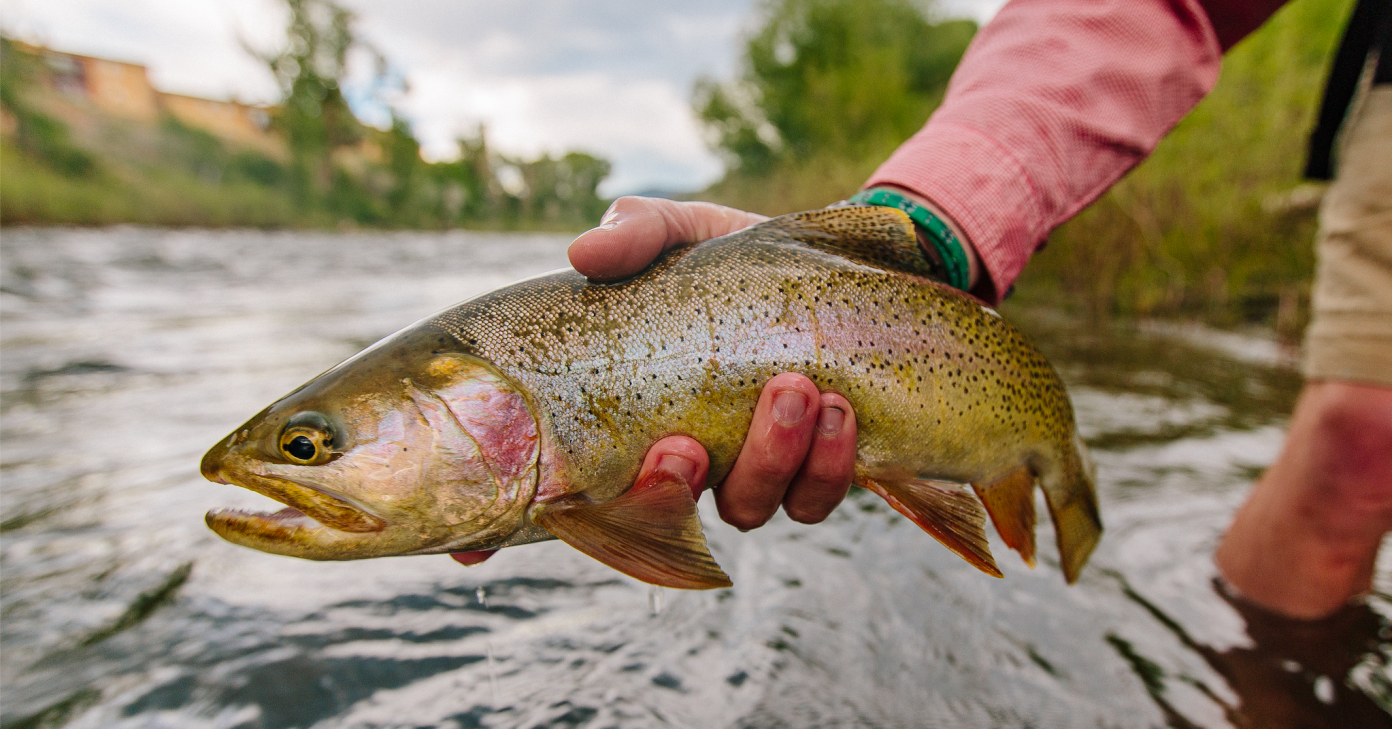Spring brings joy to fly anglers – warmer waters awaken insects and activate feeding frenzies for trout. But in many areas, spring also means battling high water flows caused by melting snowpack, known as “runoff.” Don’t let these changing conditions dampen your spirit! Here are 5 key tactics to target trout during spring runoff and turn high water into high fives.
1. Safety First:
Spring runoff can make wading treacherous. If you must wade, exercise extreme caution. Cross fast-moving water upstream, as the current will push you downstream. Maintain a low center of gravity, keeping your hips parallel to the current and planting one foot firmly before taking the next step. Consider using a wading staff or buddy system for extra security. If wading isn’t your thing, spring is a prime time for a scenic float trip! Local fly shops often offer guided adventures – a great way to explore new waters and ensure your safety. Remember, a PFD is essential when on a boat.

2. Monitor the Flow:
Understanding river conditions goes beyond safety – it helps you adjust your tactics for success. Runoff dramatically alters water clarity and trout behavior. Spikes in flow can stir up the bottom, creating murky water. But this isn’t all bad – it also dislodges trapped insects, creating a buffet for opportunistic trout. Adapt your fly selection and presentation to match the changing food sources (more on that later).
Local fly shops are excellent resources for real-time flow data. The USGS Water Data website (https://waterdata.usgs.gov/nwis/rt) provides valuable insights to help you compare current flows to historical averages. This will tell you how high the water actually is and how trout might be positioned. Remember, rapidly dropping flows can spook fish, so staying informed is crucial.
3. Go Big or Go Home:
Spring is the time to ditch the tiny nymphs and embrace streamers and large attractor patterns. Big, dark streamers are particularly effective – think cone-head Wooly Sculpins, bead-head Wooly Buggers, or Barr’s Slump Busters. If articulated streamers are your jam, Circus Peanuts, Sex Dungeons, and Barely Legals can be deadly when fished from a drift boat with sinking lines.
For high-water nymphing, flies in the size 8-16 range will do the trick. Bead-headed nymphs excel at getting down deep, while classics like Pats Rubber Legs or Hare’s Ears are great attractors. Runoff is also a green light to try those “junk flies” you’ve been stockpiling – think squirmy worms and eggs. Remember, heavier leaders and tippet (2X-3X) are your friends for fast-water situations.
4. Get Down Deep:
As the current picks up, trout will seek refuge near the river bottom. This means getting your flies down in the strike zone. Weighted flies (as mentioned in tip #3) are a great option. Don’t be shy with split shot to get streamers and nymphs deeper in fast, discolored water.
Sink-tip lines excel during high water, especially if you have a dedicated streamer setup. Alternatively, using sinking polyleaders with floating lines is another effective way to reach bottom-dwelling trout. The Airflo Extra Fast Sink in 5’ Polyleader is a reliable choice.

5. Fish the Edges:
During normal flows, trout explore the entire riverbed, finding ideal feeding lanes and cover. High water pushes them towards the banks, where the current is less intense. Trout will hug the softer water along banks and eddies to conserve energy. By focusing your efforts on the first 3-5 feet of water off the banks, you’ll significantly increase your chances of success. Float trips are ideal for effectively covering miles of prime soft water on the banks.
Don’t let high water intimidate you! With these 5 tactics in your arsenal, you can conquer spring runoff and experience the thrill of catching trophy trout during this exciting time of year.
Images/Source: FlyLordsMag





